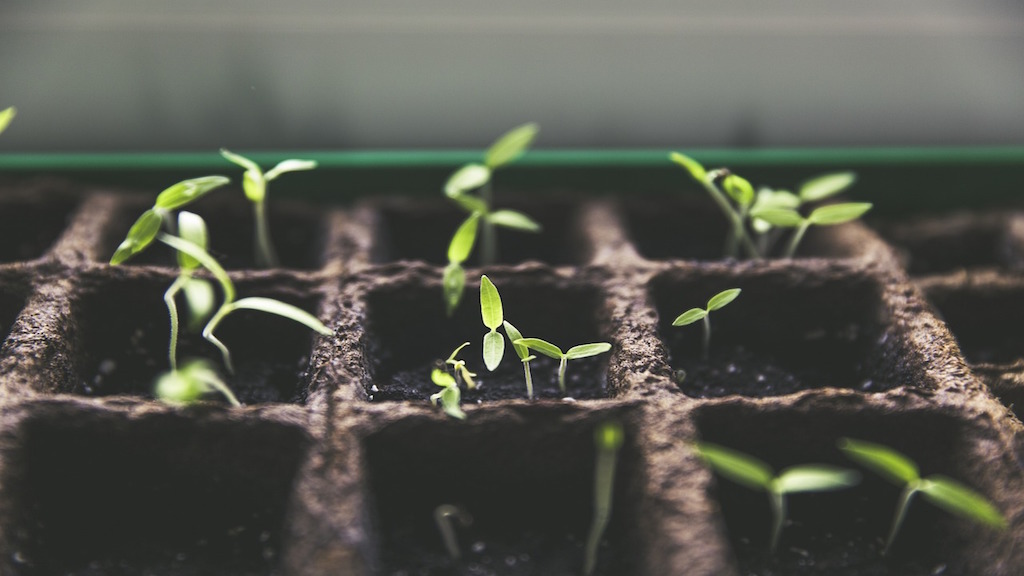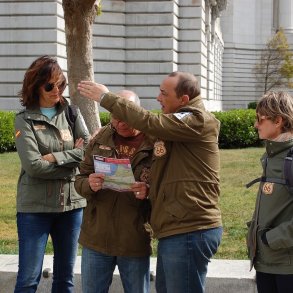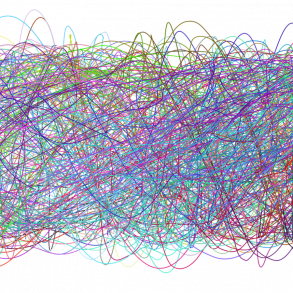By Ria Baeck, originally published on collectivepresencing.org, with an introduction for Enlivening Edge Magazine
Introduction for EE Magazine readers:
With the current interest in Teal organisations, greatly inspired by the book Reinventing Organizations, the concept of “holding space” is traveling in new directions and landing in new groups of people. Specifically, it is moving from mainly social organisations, professions, and social contexts into the business context.
As a psychologist and facilitator-trainer, I spent many years in research and inquiry into what the term ‘holding space’ actually means. It refers to something subtle, intangible, with a strong influence on motivation, engagement, and the collective outcome of conversations. As a practice, it is a crucial element in bringing the full potential of your team or organisation into manifest form.
What you read here is one part of a chapter from a forthcoming book. As such, it is longer than usual for a blog and contains some links to other parts of the book. If you are interested, I invite you to dive deeper into the content of the book on the website. You can also just read it as a stand-alone text.
I will be more than happy to respond to any questions, comments, thoughts you might have on the subject… either below in the comments here in EE Magazine, or on the book’s website. Thanks!

PART 3: I and Us
The move from the I and You of the previous chapter to the I and Us dealt with in this one is easy to understand and to make. To remind us of the larger context: we are extending outward in the process of aligning, becoming increasingly aware of the complexity of life and the interrelatedness of all that is in it. In any group there are constantly multiple relationships unfolding, back and forth and in all directions, both visibly and invisibly. To realise the full potential of such a collective, and to access the collective wisdom available in the group, we need to acquire another skill: that of becoming aware of the inner dimension, the inner collective, the inner plane of a group – for lack of a better word, the group’s field.
I would like to start by sharing another story, one which contributed greatly to my understanding of what might be possible in circles tended in this way.
3.1 What is holding space?
The unmanifest realm contains all that exists and all that could potentially exist. Elementary particles manifest from this place then vanish back into it. The whole of the physical world constantly vibrates in and out of the unmanifest realm.
– Brian Swimme, Nature and Eros lecture (Tunitas Creek Ranch, CA: September 9, 2011).
In the summer of 2007 I accompanied a dear friend in Denmark on what he called a writing retreat for himself. I expected that we would enjoy our habit of deep and inspiring conversations over breakfast and dinner together. He would then dive into his writing and I would be free to do my own thing: reading, exploring the neighbourhood and enjoying the beautiful nature. Soon, however, he announced that his writing practice would best be supported by fasting and that he would show up for neither breakfast nor dinner.
I continued doing what I fancied, but missed the good conversational company and was wondering: What am I doing here? I still felt good about it, but why exactly was I there? I could read books and explore nature anywhere and at any time! Why here and now? After holding this question for a couple of days it dawned on me: I was holding space for my friend and his writing. I noticed a clear relief in my body when I realised this. After the five days, as we were driving home, I shared my insights with him and recognised what an intimate thing it is to offer to hold space for someone. It made me wonder…
A few weeks later in a phone conversation with another friend, I told him I was holding space for him and others as they engaged in large-scale strategic, systemic work in the world – not always easy. I explained to him that this strategic work within a huge bureaucracy was not mine to do, but that nonetheless I had something to do with it: I was holding space for it. As I spoke these words, I was astonished to find tears welling up in my eyes. Articulating this inner knowing had stirred up some deep sadness.
For a long time I had been holding the question: What am I really doing when I hold space? I had noticed that many facilitators and hosts nodded their heads in recognition when we spoke of holding space. They/we seemed to understand what we meant by it, but I had never heard anybody explain it, nor could I find reference to it in books. The experiences recounted here made me aware of certain aspects of it, and I realised in that moment on the phone with my friend that this capacity of holding space needed languaging: words and distinctions to make it visible in the world. Another friend called it ‘grandmother’s work’, which was a nice metaphor but not a useful distinction.
The next important experience came in a training seminar, where an awkward situation revealed to me that holding space, for me as a woman, was not something I did in the cognitive sphere of the mind, but was essentially something that I accessed in and through my body. This realisation was very grounding for me, as if I had finally landed in my right spot. From the response of other female participants at that seminar, it transpired that this was not just my unique individual experience, but something that many women resonate with.
Nevertheless, the question remained, although now in a slightly different form: what am I actually doing when holding space, in and through my body? Some years earlier I had realised that I could sense what would happen next in a group process or systemic constellation, and that this was alien, weird, or simply not possible for others.
I also came to recognise that this sensing of what would happen next was quite different from the visions of the future experienced by others. My friend at the time was clearly years ahead in seeing what would become possible in the future, but he had no (trained) sensing organ for what might be the first next step in this unfolding, and so he was quite unable to discern where best to invest his energy, with much frustration as a result.
Having been in this years-long inquiry for myself, and looking back at our experiences in the gatherings of Women Moving the Edge, it dawned on me suddenly one day that we never spoke about ‘Spirit’, but would always use the word ‘Source’. It intrigued me as to why this was. Upon reflection, I discerned that Source – at least for me – points to the depths, to something deep inside, while Spirit seems to encompass something high above, with an eagle’s view… Hmmm… I began to draw on a sheet of paper to flesh out these insights.
Totally focused on my quest to understand this difference, I first apprehended that Source can be seen as ‘unmanifest matter’ – a potential that can materialise or not, depending on a host of circumstances. And so the answer to the question I had been holding for many months began to emerge. When I am holding space I connect through my body with the unmanifest potential of the person, group, place, project or gathering that is my focus. This was it! Holding space is shorthand for holding the energetic space in which the potential of people or groups or projects can unfold and enter the reality of time and space.
This holding space is only possible from a state of emptiness and a deep inner stillness. Without this, the potential cannot be embraced free from attachment. Of course we do not perceive this unmanifest potential through our physical senses; rather, it is an awareness of the subtler, energetic levels. We can learn to become aware of and choose to open our subtle senses to intentionally connect with this potential in service of that what wants to or can become manifest.
This intuition was later confirmed in a conversation with two dear friends about their joint project. I explained that they, as the callers or initiators of the project, would always be the ones who held the deepest and widest wellspring of possibilities. Even if they eventually expanded their core group, as they were thinking of doing, they would continue to be the callers. Other people could join and become very active in the project, and if they left the project would endure.
However, if the initiators both withdrew their energy and attention, the whole project would die. In my understanding, and according to the little model that was emerging, the new collaborators were not holding the space as deeply; they were more about bringing the project alive. In further conversations, the three of us articulated that the ‘callers’ are holding the source-point of a project. (There will be more on the practice of being a caller in chapter 5).
At a training seminar in the Art of Hosting Conversations that Matter, the question presented itself to me: “If a small group were to sit in silence, what influence would that have on the collective?” As it happened, and somewhat unexpectedly, many others where interested in this question. We spent what time we had together not ‘talking about it’, but practicing it directly. First there were 3 or 4 women, then 7 or 8 of us sitting in silence, with 10 minutes at the end to share our reflections and learning. I noticed at this particular seminar that people were invited to be in silence on many occasions. We were a big group, and some had to sit on cushions in an inner circle due to lack of space. I noticed that people would deliberately choose to sit near the centre in order to hold space for the rest. It seemed that a pattern was emerging, and consciousness about it was growing.
Holding space and place for the unfolding of what is possible looks rather passive on the outside: you are essentially doing nothing on the visible plane. And yet this holding is active; it takes a certain presence, awareness and attention. You are giving care in both the physical and the energetic dimensions. The physical attention can be seen in the careful tending to the space and in the quality of the invitation to a gathering. The energetic attention is of course subtler by nature. Still, as people enter the room they feel that there is a connectedness and a depth in the space. They notice the difference, enjoy it and are sometimes even reluctant to leave.
Generally speaking, I realised, women have a natural tendency to hold space for people, places and projects. This reflects their capacity to literally hold space in their bodies for unborn babies, something they do unconditionally without knowing what this budding human being will look like or how its life will unfold. This capacity to hold a safe space in which the full potential can emerge seems to have been forgotten in the West, at least outside the domain of the family. In business, politics and organisational life, we (even those who do it naturally and automatically) are still unaware that this skill exists and is needed.
Some people seem to have this innate ability to hold. It is a fine quality of moving into a vibrational resonance with what is present and what is possible. It is not exclusively women who do this intuitively, but very many do and are happy when we articulate it and give it words. I have no mainstream ‘scientific’ way to verify this, but the fact that the female body has a womb – an empty space whose function is to hold and manifest potential – could explain why so many of us do it spontaneously.
Holding space is by no means always easy. In contexts of collective inquiry where there is potential conflict, where people are triggered into personal, emotional content, or caught up in giving advice or getting their point across – in short, wherever there is downloading – it can be hard to stay present to the potential. In such conditions, it can be a challenge to hold steady in that place of acceptance and support. At such times, someone needs to keep the energy and attention of the collective on both the intention of the inquiry and what can become possible through the conversations. Bringing in a question that evokes the intention and/or the potential (although without expectations) can help to shift the conversation to a more generative space.
Holding space springs from a different quality of being than engaging in the conflict or debate. It can create a very different atmosphere, and at the same time it builds (on) our capacity to become present and aligned within. By tuning into and staying attentive to the intention and potential, we broadcast this frequency out from ourselves to others.
In this way we invite other participants to inquire and speak from the same space, frequency or alignment. We offer each participant an opportunity to reach for their greatest potential in the here and now. Holding space is both holding the unmanifest potential and holding the tensions in the process of inquiry. Depending on your perspective, it is holding the space open for the best possible outcomes and the greatest possible participation, at the same time. It implies absolute trust in both the process and the people.
Harrison Owen, the inventor of Open Space Technology, says that holding space “dates back at least to the first shamans”. The practice and skill of holding space is not limited to gatherings, training seminars and workshops, although facilitators of such events are to some extent aware of this quality they can bring in. I have learned that holding space is also used in other contexts: dance, psychotherapy, spiritual groups, and so on. The Quakers have a ‘vibes watcher’ in their meetings.
Holding space also applies to mundane situations we find ourselves in every day. Wherever we are, we can be present to what is possible, in a benignly detached way without emotional engagement, expectations, or fixed plans. We are just holding the potential; holding the space for wherever we are and for whatever is emerging.
We know from the work of midwives and doulas that birth outcomes are improved when there is someone present during the birth process who is there to hold space for the woman giving birth, alongside the midwife, who is there for the baby.
We are gradually coming to understand that this is equally true for teams and organisations. What if this quality, this tending of the energetic space, were acknowledged as important in any new endeavour?
Surely it would improve the quality and outcome of any project. Later in the book, once all aspects of the Collective Presencing practice are laid out, we will build on this strategic aspect of this new human capacity.
In order to avoid any confusion arising around this new concept, and in the interests of creating clear distinctions, it is important also to specify what holding space is not. I remember a story of a woman who spent many years ‘holding her sister’ through many challenging situations. All those around her could see that this kind of holding was no longer the right thing for her to do. The space she was holding for her sister did not arise from a place of stillness and centeredness; rather, she was stuck in a rut and could not respond in any other way. She was not able to say to her sister: “Do it!” or “Move on.”
In her case, then, this holding space was not a capacity but a habitual pattern that she was unaware of and unable to relinquish. How sensitive is our understanding of what to hold and what not? Of when to hold and when to let go? Echoing earlier chapters: how flexible are we in our responses?
Holding space is always about keeping open the possibility for potential to manifest, be it in people, in seminars, meetings and events, in teams, in companies, and so on. Sometimes the holding is more passive, like an open hand: being present, supporting, giving attention. Sometimes it is more active, giving a clear signal or impulse: now do it yourself, give it a try. Always being like an open hand is too much of one flavour, and can let a situation stagnate without realising its potential.
In this case, the holding gets blocked in a kind of waiting… waiting for the thing that we hope for, but that will never happen unless someone acts. Sometimes withdrawing the holding and support and trusting in the strength and resourcefulness that is present challenges the one being held to dig deeper into their actual power that was there all along.
In our Western culture, the expectation that the potential should manifest immediately blocks a natural unfolding. There is too much pressure to get things done, to take a step right now, even when it is not yet clear what the real purpose is or what action is aligned in time, space and context. Holding space needs to happen without any expectation of a specific outcome, reward or recognition; it is offering a space to unfold, and is not necessarily focused on tasks as such. Much of what good parents do is exactly this: sometimes supporting, sometimes challenging, but always open to the response and sensing what is aligned with the potential of this particular child.
This capacity to hold the whole and hold space for unmanifest potential has been attracting more attention in recent years, and is starting to surface more into awareness (in the West). Because it is part of learning how to consciously and intentionally manifest, alongside actually practicing holding space, it is equally important to name and articulate this skill. It needs to be included as a foundation stone to enable every project that is set up to develop in a natural and organic way. We have noticed that once this invisible activity has been illuminated it is more easily seen and recognised by others who have never given it attention before.
Permission to republish granted by the author.
Featured Image/graphic link added by Enlivening Edge Magazine.





